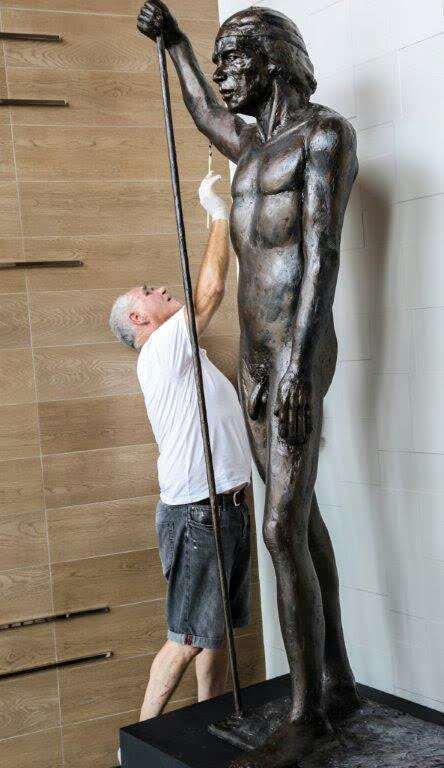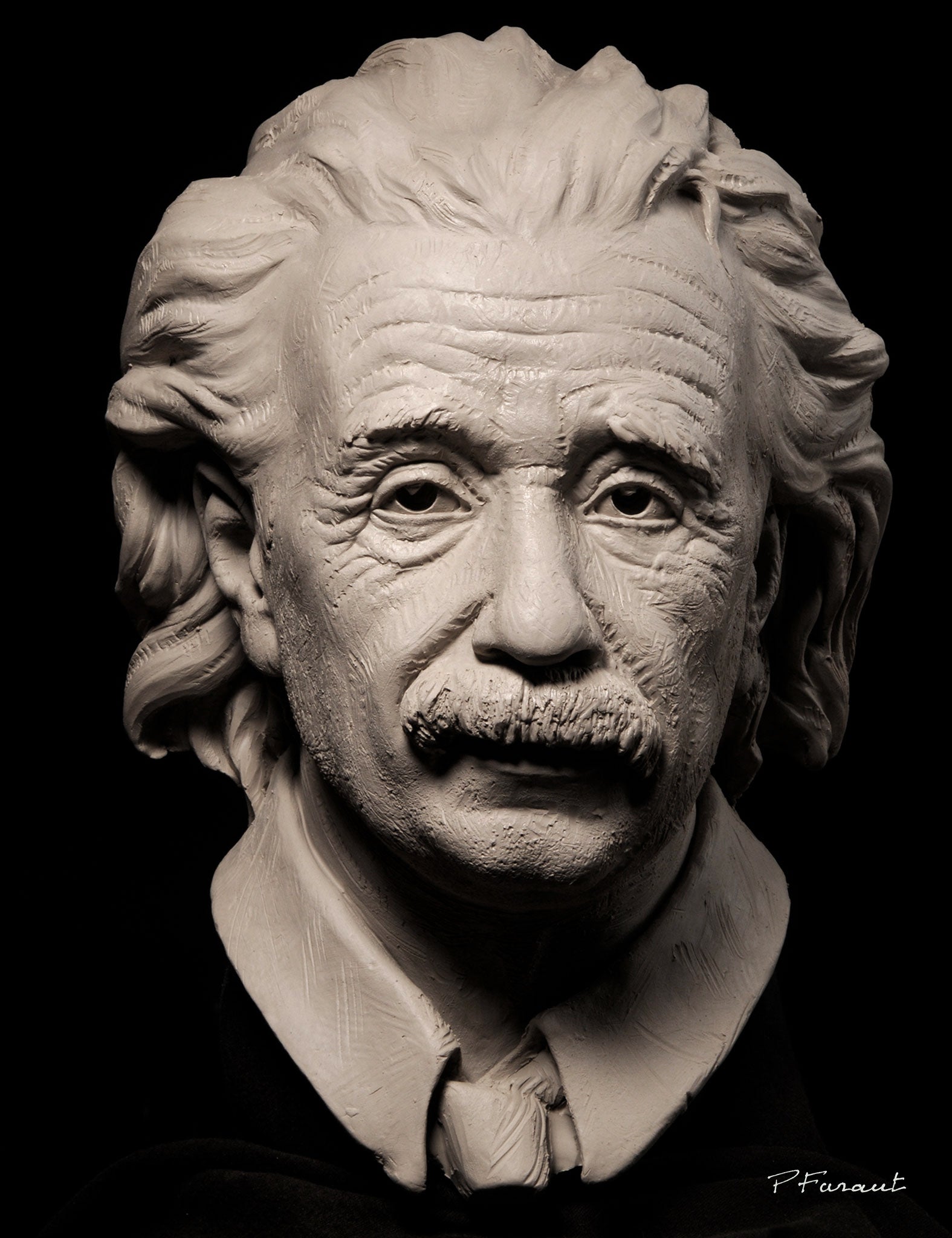The Development of Sculptures: From Old to Modern
The Advancement of Sculptures: From Old to Modern.
Sculpture, one of the oldest kinds of art, has been an integral part of human world for millennia (Portrait Sculptor). From the old civilizations of Egypt and Greece to the modern-day age, sculptures have actually advanced, mirroring modifications in artistic methods, products, and cultural influences. This journey via time traces the growth of sculptures, checking out the changes stylishly, subject, and creative expression
Starting with the old world, sculptures crafted from stone and later bronze caught the significance of divine beings, leaders, and everyday life. The Renaissance period saw a resurgence of classical sculpting strategies, as artists sought to replicate the elegant kinds of old Greek and Roman sculptures. In the contemporary age, musicians challenged conventional borders, accepting abstraction and testing with new products.

This exploration will look into the varied development of sculptures, revealing the abundant tapestry of imaginative expression throughout various durations and cultures.
Ancient Sculptures: From Rock to Bronze
Ancient sculptures transitioned from being taken of stone to being cast in bronze. This change marked a substantial evolution in the art of sculpture, allowing for greater improvement and information in the finished jobs. Stone sculptures, while remarkable in their own right, were restricted by the nature of the material. Stone needed extensive carving and shaping, often leading to a much more streamlined representation of the subject.
The introduction of bronze as a tool for sculptures caused a change in imaginative expression. Bronze offered carvers the possibility to create lifelike and intricate types that were not feasible with rock. The process of casting bronze enabled the creation of several duplicates of a sculpture, allowing wider distribution and preservation of these artistic masterpieces.
The change from stone to bronze also saw a shift in the subject issue of sculptures. While stone sculptures predominantly illustrated gods, goddesses, and mythological numbers, bronze sculptures began to reflect a more comprehensive series of subjects, consisting of everyday people and pets. This expansion of topic showcased the adaptability and adaptability of the bronze medium.
Renaissance Resurgence: Sculpting in the Timeless Design
The Renaissance resurgence of sculpture witnessed a renewal in the classic design, structure upon the innovations made throughout the transition from stone to bronze in old sculptures. During this period, musicians sought to recreate the classic aesthetic and suitables of appeal that prevailed in old Greek and Roman sculptures.
Among the essential qualities of the Renaissance revival was the focus on naturalism and the human kind. Sculptors like Donatello and Michelangelo aim to capture the physiological information and expressions of their topics with unmatched precision. They researched the human body and included their monitorings into their sculptures, leading to realistic and practical representations.
An additional important element of the Renaissance resurgence was the expedition of point of view and depth. Musicians used strategies such as contrapposto, where the weight of the body is changed to one side, creating a sense of movement and dynamism. They also tried out with different products, consisting of marble and bronze, to attain a degree of sophistication and details in their sculptures.
The classic design of the Renaissance resurgence had a profound impact on later periods of art, working as a structure for the growth of Western sculpture. It brought a renewed admiration for the elegance and grandeur of the human type, and its tradition can still be seen in modern sculptures today.
Modernism and the Avant-Garde: Breaking Traditional Borders

One of the essential characteristics of modernist sculpture was the focus on abstraction. Sculptors moved far from sensible depictions and instead concentrated on capturing the essence of the subject with streamlined types and geometric shapes. This departure from conventional depiction permitted artists to reveal their feelings and concepts in an extra subjective and individual manner.
Furthermore, the avant-garde activity challenged social standards and conventions, encouraging artists to experiment and push the borders of their art - Contemporary Sculptures. Sculptors began integrating non-traditional materials such as discovered things, commercial materials, and also natural environments into their work. This expedition of brand-new products and techniques not only broadened the opportunities for sculpture yet likewise tested the traditional ideas of what might be taken into consideration art
Contemporary Sculptures: Exploring New Products and Concepts
With a focus on exploring brand-new products and ideas, modern sculptures have reinvented the field of art. Artists today are pushing the boundaries of conventional sculpture by making use of innovative materials and exploring with abstract principles. These sculptures test standard concepts of materiality, meaning, and type, welcoming viewers to involve in a provocative and new artistic experience.
Contemporary artists are welcoming a variety of products, including plastic, glass, metal, and even organic matter. Contemporary Sculptures. They are not limited to the standard medium of rock or clay, enabling better civil liberty and testing. This change in the direction of unique materials has actually opened new opportunities for musicians to develop sculptures that are vibrant, interactive, and Figurative Sculptures visually striking
In enhancement to exploring brand-new materials, contemporary sculptures likewise explore complicated and abstract ideas. Musicians are now discovering styles such as identification, social issues, and the setting, using sculpture as a powerful tool for social discourse and self-questioning. These sculptures challenge customers to believe seriously and engage with art on a deeper degree, sparking conversations and provoking emotional responses.
International Influences: Sculptural Customs From Around The Globe

In ancient Egypt, sculptures were developed mainly for spiritual and funerary objectives. The famous sculptures of pharaohs and gods, such as the Great Sphinx and the bust of Queen Nefertiti, showcase the Egyptians' mastery of stone sculpting and their belief in the immortality.
In old Greece, sculpture reached its peak throughout the classic period. Influenced by the suitables of elegance, proportion, and consistency, Greek sculptures emphasized the human kind and celebrated the success of gods, heroes, and professional athletes. The well-known sculptures of Aphrodite of Knidos and the Discobolus exemplify the Greeks' quest of excellence in sculptural art.
In old Rome, sculpture served both political and creative functions. Bronze Sculptures. Roman sculptures commonly depicted emperors, generals, and mythological figures, showing the power and splendour of the empire. The marble statuary of Augustus of Prima Porta and the huge Arc of Constantine are noteworthy instances of Roman sculptural accomplishments
Asian sculptural traditions, specifically in India, China, and Japan, have also had a profound influence on the advancement of sculptures. Japanese sculptures, affected by Buddhism, emphasize simpleness and harmony, seen in the serene sculptures of Buddha and the elegant art of bonsai.
The international influences on sculpture proceed to evolve in the contemporary period. As we look to the future, it is particular that the worldwide influences on sculpture will proceed to shape and redefine this ancient art kind.
Verdict
In verdict, the development of sculptures has seen a change from ancient stone and bronze works to the classic rebirth during the Renaissance. Today, modern sculptures discover new products and concepts, while also attracting inspiration from international sculptural customs - Portrait Sculptor.
From the old human beings of Egypt and Greece to the modern-day age, sculptures have actually progressed, showing modifications in artistic techniques, materials, and cultural impacts.Starting with the ancient globe, sculptures crafted from rock and later bronze caught the essence of divine beings, rulers, and everyday life.Ancient sculptures transitioned from being carved out of stone to being cast in bronze. While stone sculptures predominantly depicted gods, goddesses, and mythological figures, bronze sculptures began to mirror a wider range of topics, including day-to-day people and animals.In conclusion, the development of sculptures has seen a change from ancient stone and bronze functions to the classical resurgence during the Renaissance.